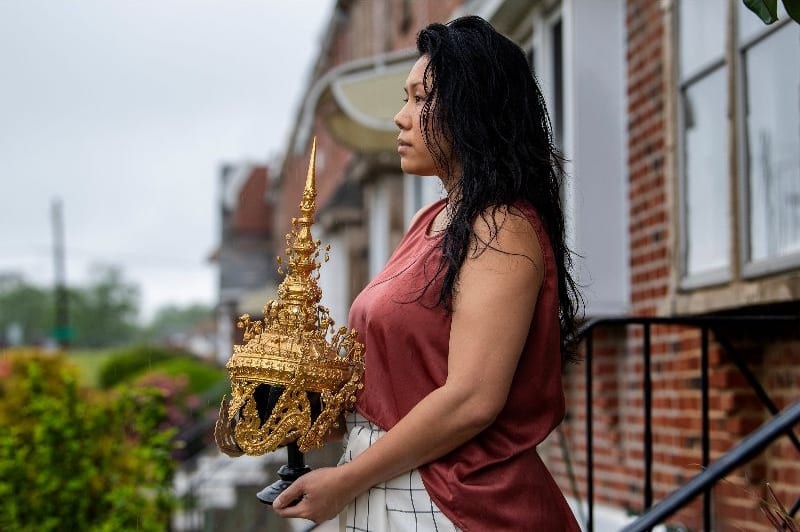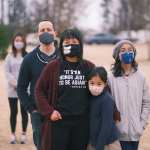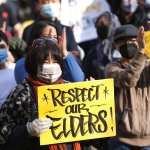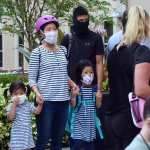This collection, Portraits of a Pandemic, is a co-production between The Philadelphia Inquirer and The 19th. This work is supported by the Pulitzer Center and The Lenfest Institute.
Catzie Vilayphonh will remember 2020 as the saddest Lao New Year.
Normally a time to gather and reunite with friends and relatives, with rituals, foods, and familiar customs, this year’s celebrations for the mid-April holiday were canceled amid the pandemic.
“If you’re living alone, you can’t give yourself a blessing,” said the 39-year-old poet. “So you miss out on this idea of someone wishing you a great and prosperous new year. Being social isn’t just about having friends and being liked. It’s also about people acknowledging your presence.”
With the stay-at-home order in place in the city through May, Philadelphians with Asian roots have had to mark Asian American Heritage Month indoors. The pandemic has cost thousands of lives and millions of jobs, but also lost in the months of staying at home is the sense of community and culture central to many Americans, including among many immigrants and refugees.
Vilayphonh is one of the keepers of Lao tradition and culture in the city. Her family settled in Philadelphia when she was an infant, and she grew up translating English and navigating much of American culture for her parents. While they didn’t explicitly instill in her a sense of pride in being Lao, her family did lead Vilayphonh to embrace her identity.
As an artist, she writes poetry confronting stereotypes against Asian women. And in 2015, she opened Laos in the House, a nonprofit arts organization that promotes storytelling among Lao American refugees.
“Growing up, the people who lived in our neighborhoods or lived near the temples knew who we were, because they saw us out and celebrating, wearing our clothes and eating our foods,” Vilayphonh said.
“To be able to celebrate our holidays in public, it took a long time to get here. … Now we’re almost back to Square One. The way in which we celebrate traditions is to ourselves again.”
Maintaining the sense of shared experience has been a challenge during the pandemic, especially among older community members who either lack access to technology or aren’t comfortable with it. In many ways, Vilayphonh finds herself again acting as a bridge and a translator.
Her latest effort through the gallery is an oral history project, “Sukapop Sap!” which, loosely translated, means “delicious health.” The premise is based around younger Laotians interviewing older family members about dishes they created in refugee camps, using food memories as stories of adaptability and survival. The recorded conversations will be posted online.
Vilayphonh’s work will also be featured in an upcoming show at the Asian Arts Initiative. The virtual exhibit, “Thank You, No Thank You,” is timed to the 45th anniversary of the end of the Vietnam War. It will focus on Asian refugee identity and the idea of “good immigrant behavior,” and examine the role American foreign policy had in their becoming refugees.
Remaining a visible cultural ambassador feels like urgent work that Vilayphonh thought might not always be relevant. During the pandemic, racial backlash against Asian Americans has increased across the country, with President Trump frequently referring to COVID-19 as the “Chinese virus.” In Philadelphia, Asian-owned businesses have suffered as others have blamed them for spreading coronavirus.
Vilayphonh said that for some of her Asian friends and family, the pandemic “affects your identity and what you can and can’t be proud of.”
“This has given me pause to think about the kinds of things I would like to focus on and what is necessary,” she said. “You think we’ve made progress, but then something traumatic happens, and the whole world changes on you.”







